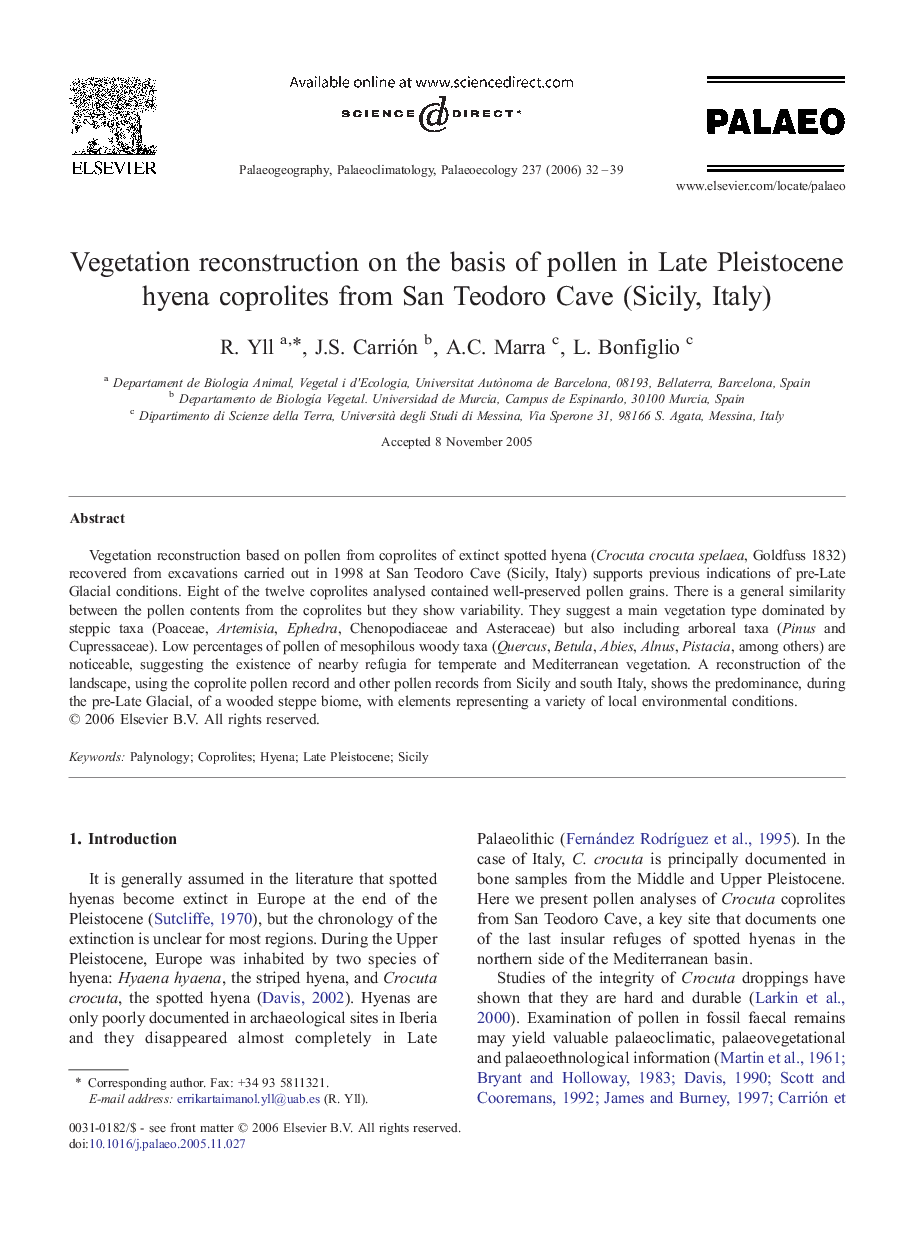| Article ID | Journal | Published Year | Pages | File Type |
|---|---|---|---|---|
| 4469358 | Palaeogeography, Palaeoclimatology, Palaeoecology | 2006 | 8 Pages |
Vegetation reconstruction based on pollen from coprolites of extinct spotted hyena (Crocuta crocuta spelaea, Goldfuss 1832) recovered from excavations carried out in 1998 at San Teodoro Cave (Sicily, Italy) supports previous indications of pre-Late Glacial conditions. Eight of the twelve coprolites analysed contained well-preserved pollen grains. There is a general similarity between the pollen contents from the coprolites but they show variability. They suggest a main vegetation type dominated by steppic taxa (Poaceae, Artemisia, Ephedra, Chenopodiaceae and Asteraceae) but also including arboreal taxa (Pinus and Cupressaceae). Low percentages of pollen of mesophilous woody taxa (Quercus, Betula, Abies, Alnus, Pistacia, among others) are noticeable, suggesting the existence of nearby refugia for temperate and Mediterranean vegetation. A reconstruction of the landscape, using the coprolite pollen record and other pollen records from Sicily and south Italy, shows the predominance, during the pre-Late Glacial, of a wooded steppe biome, with elements representing a variety of local environmental conditions.
